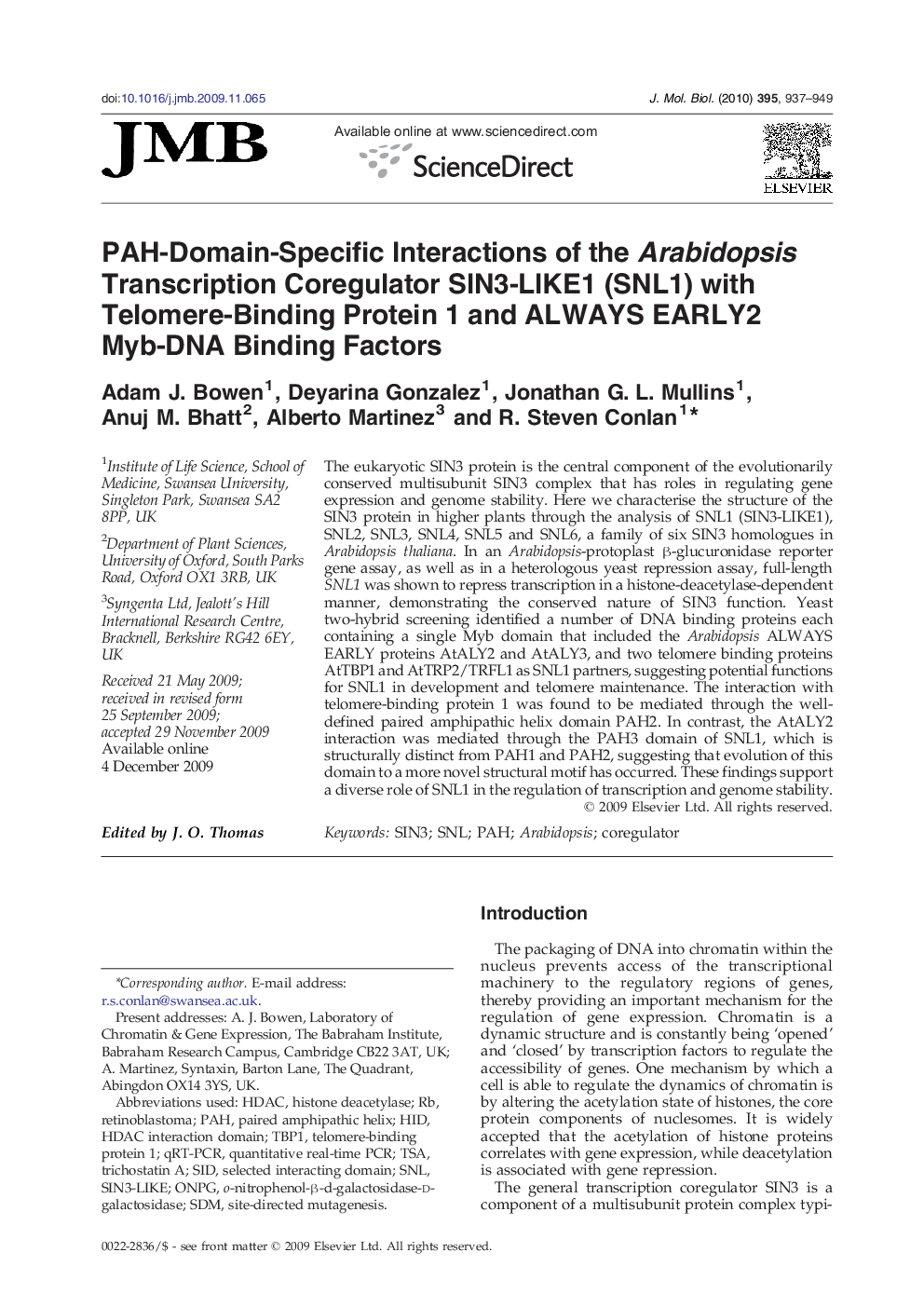| Article ID | Journal | Published Year | Pages | File Type |
|---|---|---|---|---|
| 2185944 | Journal of Molecular Biology | 2010 | 13 Pages |
The eukaryotic SIN3 protein is the central component of the evolutionarily conserved multisubunit SIN3 complex that has roles in regulating gene expression and genome stability. Here we characterise the structure of the SIN3 protein in higher plants through the analysis of SNL1 (SIN3-LIKE1), SNL2, SNL3, SNL4, SNL5 and SNL6, a family of six SIN3 homologues in Arabidopsis thaliana. In an Arabidopsis-protoplast β-glucuronidase reporter gene assay, as well as in a heterologous yeast repression assay, full-length SNL1 was shown to repress transcription in a histone-deacetylase-dependent manner, demonstrating the conserved nature of SIN3 function. Yeast two-hybrid screening identified a number of DNA binding proteins each containing a single Myb domain that included the Arabidopsis ALWAYS EARLY proteins AtALY2 and AtALY3, and two telomere binding proteins AtTBP1 and AtTRP2/TRFL1 as SNL1 partners, suggesting potential functions for SNL1 in development and telomere maintenance. The interaction with telomere-binding protein 1 was found to be mediated through the well-defined paired amphipathic helix domain PAH2. In contrast, the AtALY2 interaction was mediated through the PAH3 domain of SNL1, which is structurally distinct from PAH1 and PAH2, suggesting that evolution of this domain to a more novel structural motif has occurred. These findings support a diverse role of SNL1 in the regulation of transcription and genome stability.
